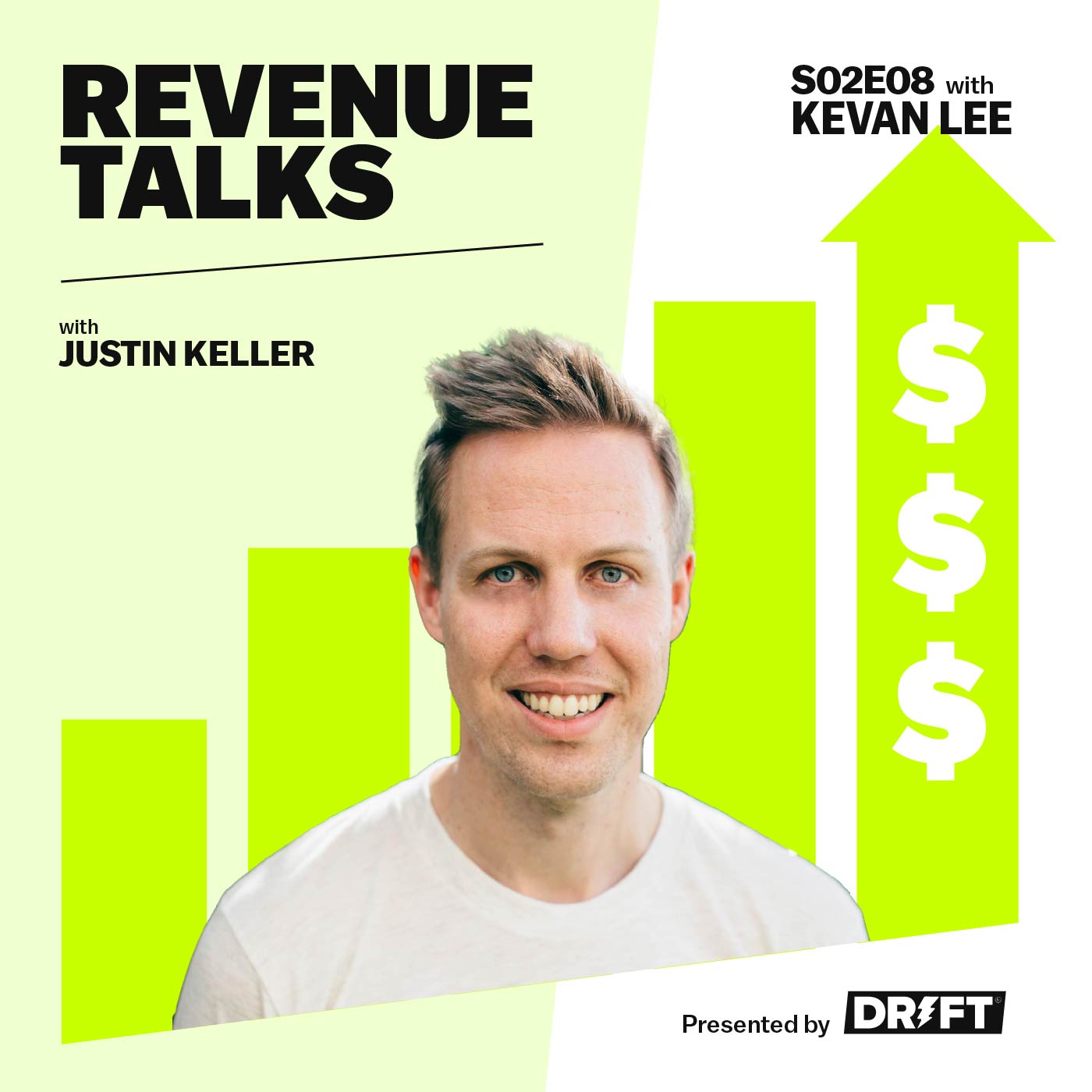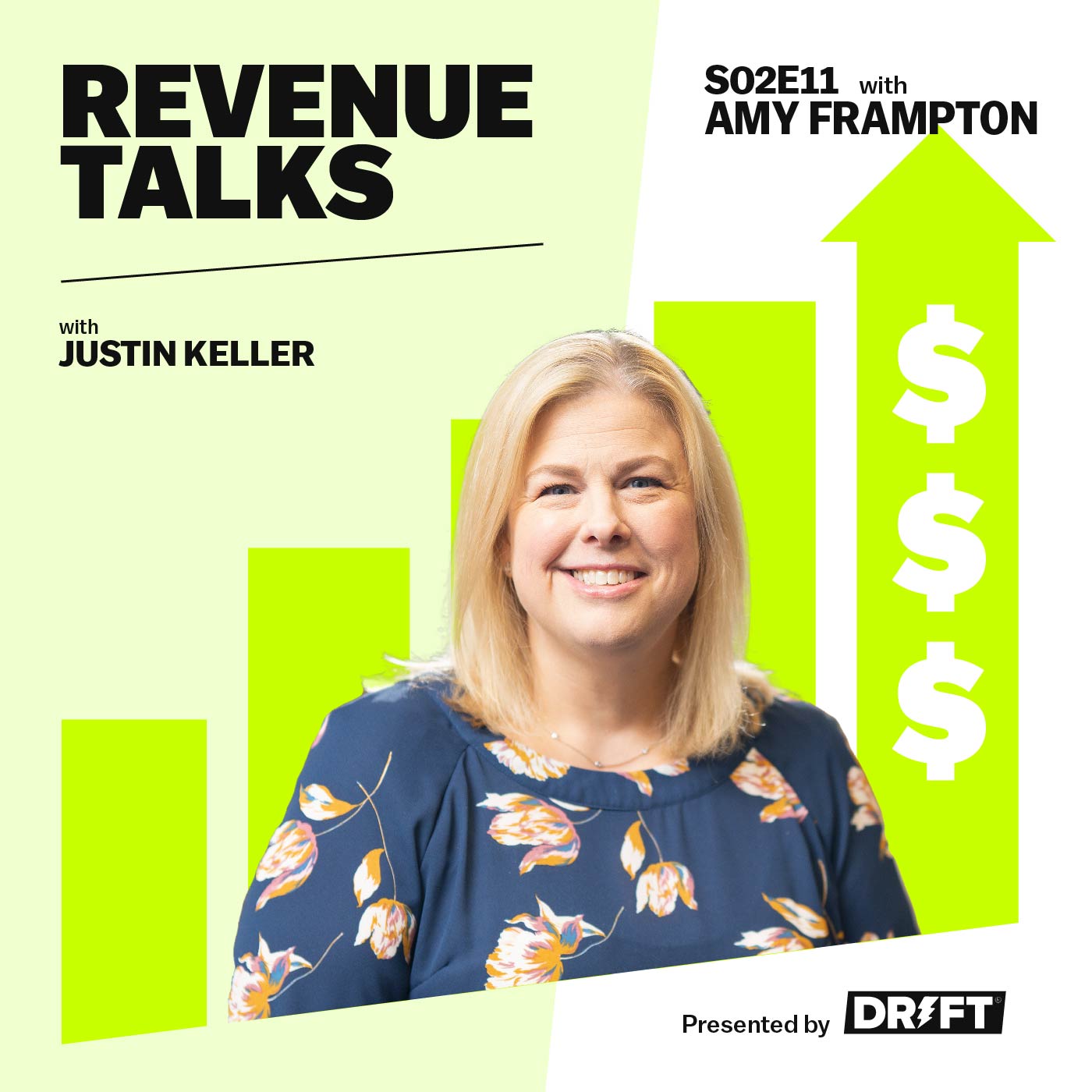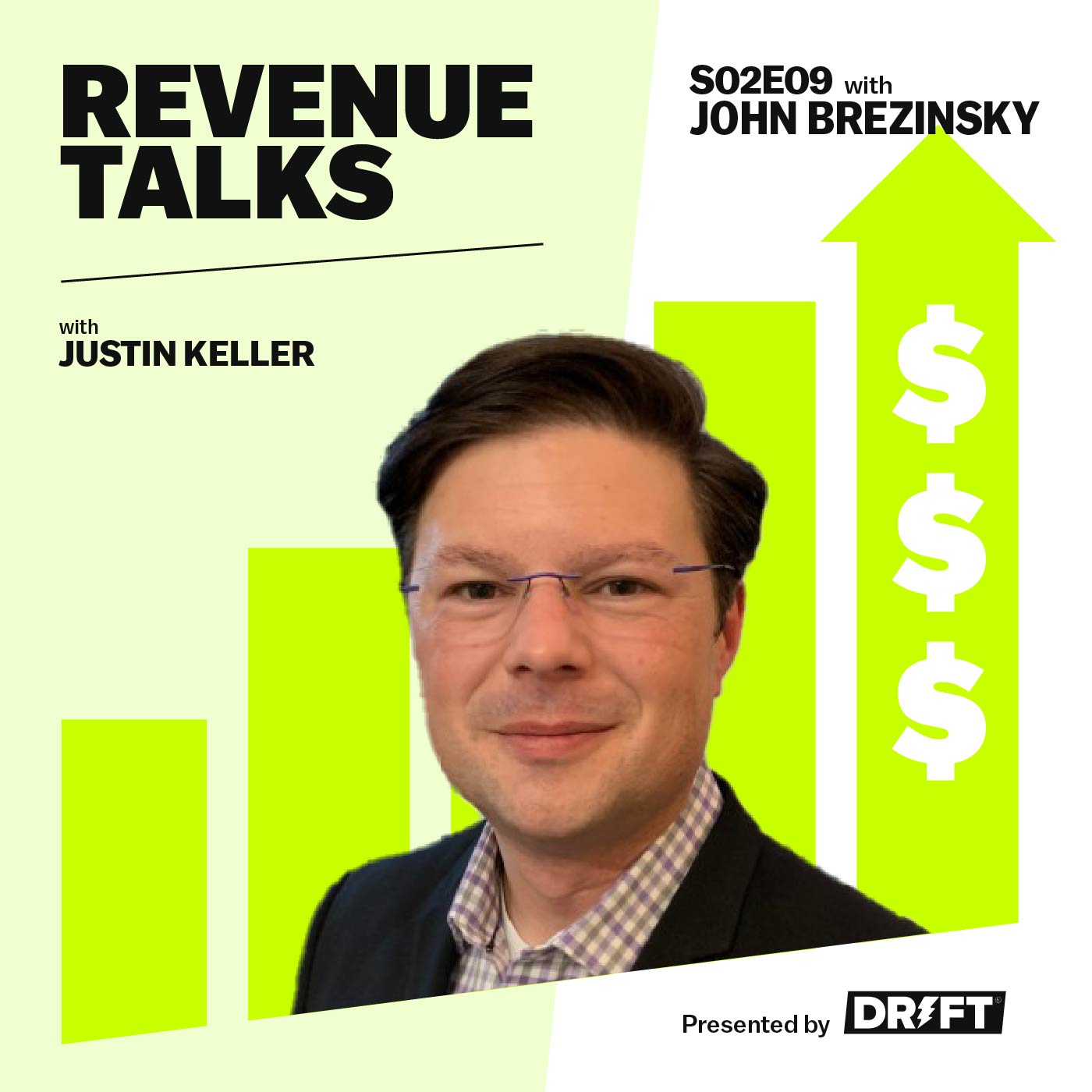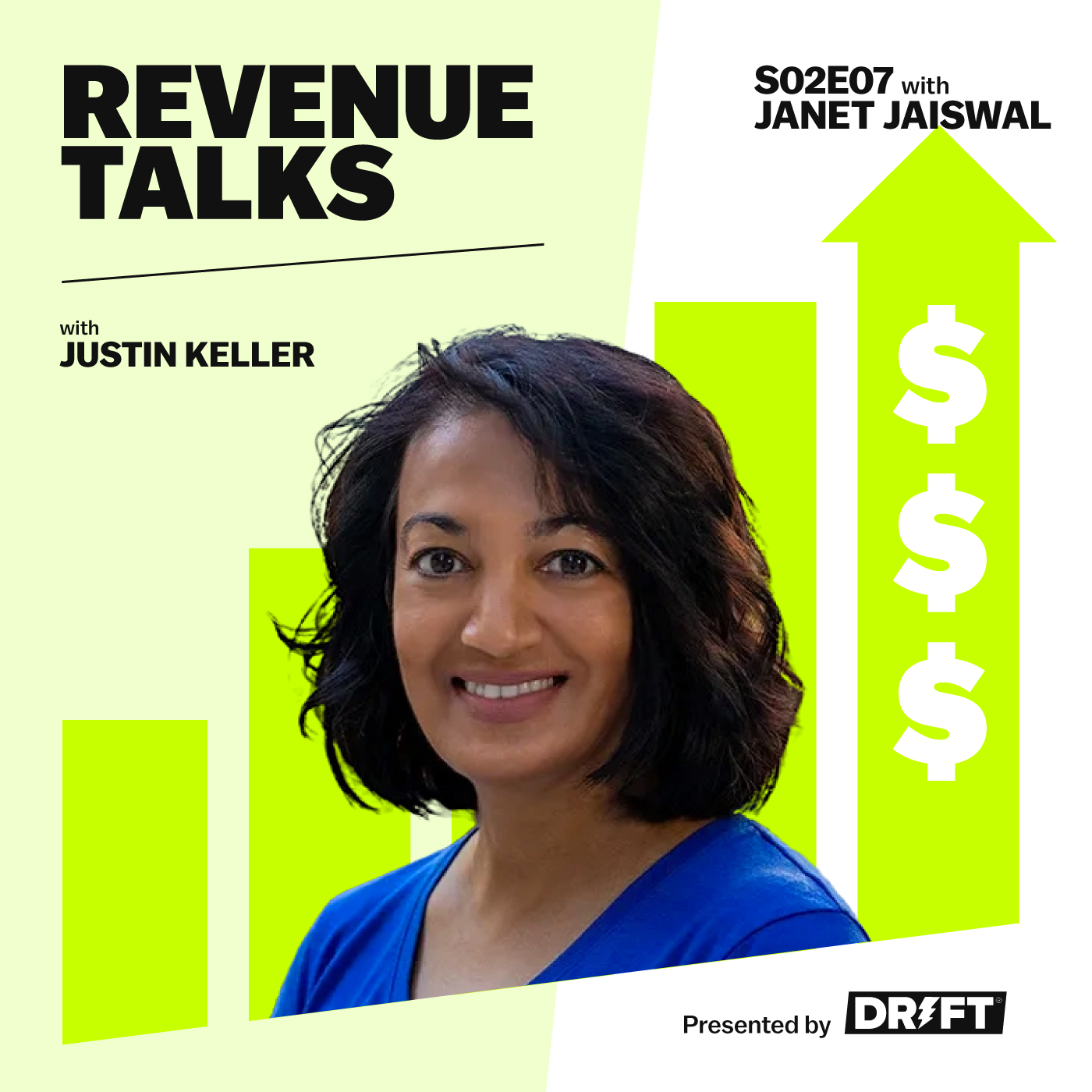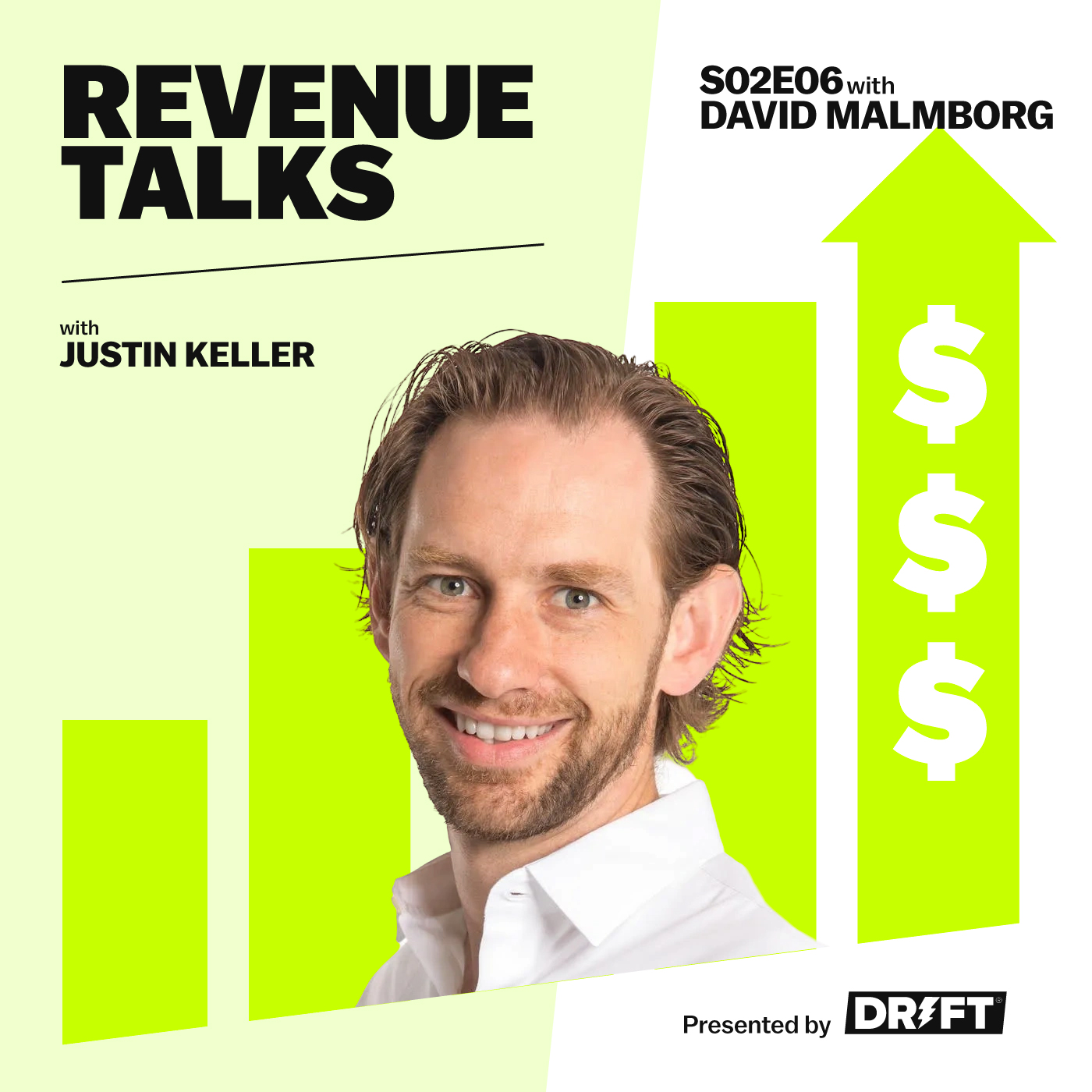The Go-To-Market Scoreboard | Kevan Lee
- 0.5
- 1
- 1.25
- 1.5
- 1.75
- 2
Justin Keller: Welcome to Revenue Talks, the show where we get real about what it takes to build pipeline and drive expansion as a go- to- market team. I'm Justin Keller, the Vice President of Revenue Marketing at Drift, and on this show, I'm here talking to folks across the entire go- to- market organization, which means marketing, sales and customer success, about how these conversations, technology and cross- functional alignment to build more pipeline and drive expansion. Because revenue is everyone's business now. Welcome back for another episode of Revenue Talks. I'm Justin, and today I'm joined by Kevan Lee who is the SVP of marketing at Oyster. And if you don't know, Oyster is a global employment platform that enables companies everywhere to hire people anywhere. I love Kevan's career trajectory. Started out in sports writing, then a somewhat natural progression into content marketing, and now he runs entire marketing teams, scales them through hyper growth. And having spent some time in sports writing, I assume one thing Kevan knows a lot about his team's sports, which let's be honest, is what go- to- market is. So I'm very excited for this. This is probably also going to out me as not knowing a whole lot about sports if we get into sports metaphors. But Kevan, thanks so much for joining me on the show.
Kevan Lee: Of course. Thank you, Justin. This is great. I'm excited to chat with you.
Justin Keller: Me too. Maybe before we get into all the nitty gritty, something on your LinkedIn profile caught my eye and it is that you also teach a growth marketing course, excuse me, at Boise State.
Kevan Lee: Yes.
Justin Keller: Which is wild because I hear complaints all the time and I'm one of the people surfacing these complaints is that in graduate level marketing, they teach you nothing that's current or relevant to today's marketplace. So can you fill us in on your syllabus a little bit?
Kevan Lee: Yeah. Absolutely. That's why this course exists. So, it's part of this unique program that's about design and innovation, and so my course on growth marketing, we call it Growth Hacking is one of the courses. We also do ideation and design, we do analytics, we do emerging technology. And so it's all these really cool kind of cutting edge topics. And then mine is basically, it's called Growth Hacking, but it's a mask for a digital marketing curriculum. So the students get to come up with their own company from scratch, put together a business plan, a website, and then I run them through a channel strategy for how to grow it. So it's fun and it makes me feel smart because I get to tell them the beginner level stuff that they don't know anything about, that's it's easier for me. So it's a good boost to my ego, too.
Justin Keller: That's awesome. What are the kind of student reactions? I mean, is this something where... I don't know how long you've been teaching this, but do they go on to have cool tech marketing careers?
Kevan Lee: They do, yeah. I mean, it's been really mind opening for a lot of students. They come into college with this expectation that here's my career and it's on this path. And you saw it from my LinkedIn and background. I have a very non- traditional path into marketing and tech. And so it's really about mindset. And I think giving them that permission to learn this mindset, to adapt these basically growth marketing, growth hacking techniques and then apply it to whatever they're interested in is just huge for them. I've had students come to me afterward and say, " I thought I was going to do this thing after school, and now I want to go and do this thing that I really love." And it means to the world to hear that stuff.
Justin Keller: Yeah, that's got to be really, really fulfilling. I've honestly pitched to my local university, " Hey, I would love to just, even if it's one class, let me sub in and teach marketing fundamentals, current tech marketing fundamentals," and they're like, " No, we're good." But that was something I just wanted to... It's so hard to hire, find really talented young marketers and so it's awesome that you're doing it. What made you want to go and do that?
Kevan Lee: Well, my background is nontraditional and so everything I've learned in marketing has been learned on the job, learn as you go. And so I've been really grateful for the folks who have taken time to teach me all these things. I mean those poor souls, I knew nothing when I got started here. And so to whatever degree I can give back and can help in that regard, I'm here for it and I want to make that part of how I spend my time.
Justin Keller: I love that. All right, well now I'm ready to go to school. Everyone listening to Revenue Talks is ready to go to school with you. So I was snooping around and one thing... So I absolutely love that you did this, Kevan, is you have an interview with yourself on your sub stack and in that you talk about your role at Oyster, but about how the entire go- to- market team shares the company's revenue goals, which I fully applaud and endorse. Can you break that down for us? What does that mean to you that the go- to- market team shares the revenue goals? And bonus points? If you can turn that into sports analogies that I try to understand.
Kevan Lee: Of course. So we like to think of our go- to- market as one big team, and so there's two go- to- market leaders, it's me, SVP of marketing, and then we have an SVP of sales and partnerships. And so he and I are very close, obviously, and I think we both experienced jobs in the past where those two teams were almost competitive against each other, which just did not create good environments, did not create a lot of success. And so we think of us as one big team. We share budget, we share goals, we share projects, campaigns. We're just kind of all enmeshed together. We're in it to win it, for better or worse. Kind of the way I would think about it, I think there's... I'm going to tell you a sport I don't know a whole lot about is F1, like Formula One racing, and so you have someone in the car driving the car, then you have someone else on the sidelines coaching the person through the turns and pit stops and all these different aspects of it. And so it's kind of like that tag team relationship where you have us kind of swapping roles and doing different types of things all for the same goal. Maybe another way to think of it is doubles tennis. We're both on the same side of the court doing the same thing, taking turns, hitting the ball back and forth, but we win or lose together is kind of the idea behind it. So from an org structure is probably pretty typical, but I think a lot of it's how we work and how we think together, which makes the difference.
Elizabeth: Hey, it's Elizabeth, the producer of the Drift Podcast Network. I hope you're enjoying this episode of Revenue Talks. If you're looking for even more go- to- market best practices, check out our e- book GTM Lab. You'll get go to market hot takes and secrets from the industry's brightest minds on how to ignite every phase of your strategy, giving you even more ways to energize your marketing and sales efforts. Give it a read at drift. ly/ gtmbook. Now back to the show.
Justin Keller: So I'm coming to you from Indianapolis, home of the Indy 500, and I think we've got a lot of motorsports. So that actually does resonate with me. I get that metaphor pretty well. How did you get there though? I mean, was this a natural... When you joined, was it kind of like, " All right, let's be friends, let's pull in the same direction, let's start a doubles tennis team." Or did it take a little while to build that bridge and find that partnership?
Kevan Lee: I think we both had been burned by it in the past in past jobs, and so coming into it was a bit easier of a sell to say, " This is the type of culture, the type of team we wanted to build." I was fortunate at Oyster, so I joined and one of the co- founders is a really great marketer and had built some of the foundations for me. And so he kind of had instituted this general culture of sharing and collaboration. So that was easy for me to jump into and a lot of those relationships and expectations are already built, but if I were to do it over again, I think it would come back to making sure that sales and marketing are in the same room when it comes to decision- making. If I'm the first marketing hire, can I be involved in making that sales hire and vice versa? So in this case, our salesperson was already here and I came in second, and so making sure that he had a voice in that hiring decision and had a strong say as to someone I can work with, I think those are really important. And then the people themselves. So I'm low ego, even though I did an interview with myself on my own sub stack. I think being low ego helps and having a partner who is similar low ego, it goes a long ways.
Justin Keller: And yeah, for the record, I don't think that was a high ego move. I think that was, it shows emotional awareness and self awareness. So I think I took inaudible
Kevan Lee: Okay, thank you.
Justin Keller: So let's continue. I'm going to try and jam as many sports analogies in here as clumsy as I can. When it goes time to look at the scoreboard, so if we talk about go- to- market revenue as a scoreboard, are you and your head of sales looking at one number, like that's our score, or do you guys have different numbers and some composite of those numbers equals the grand total score?
Kevan Lee: Yeah, we look at so many numbers. If I could use a football analogy. So there's the score, how many points do we have on the scoreboard? But there's our offensive stats, there's no defensive stats, there's our new business and our expansion business. There's... Under offense, there's rushing yards, there's passing yards, so there's pipeline, there's closed/ won. There's a bunch of different metrics. We kind of think of it as a cascade. You have your North Star of ARR, and then you build down from that, new and expansion. Pipeline for new closed/ won, pipeline breaks down into inbound, outbound and partnerships. And so it's just kind of this Russian nesting doll of metrics. And so oftentimes we're reporting on obviously the big one, but also two or three of the leading indicators that are going to build up toward more of the lagging indicator of ARR. But we're watching a whole dashboard full of different metrics.
Justin Keller: And because you guys share the same North Star, as you said, when those other numbers start to come out of alignment, it's not like there's a blame game. You're not pointing fingers, it's like, " Okay, I think this part of the funnel's jammed up. What can we do together to solve this?" Because at the end of the day, you want to get to the same place.
Kevan Lee: Totally. Yeah. And I think it's... So for instance, for us, we talk a lot about channel mix. When we say channel mix, we mean inbound, outbound and partnerships. And so let's say in Q4, we've modeled a certain percentage of pipeline contribution from outbound, but it's just not there for whatever reason. So then the conversation happens, " Can we fix this? Yes or no?" But also can we rely a bit more on inbound this quarter to make up for the gap there? And then how does that project into the future? And so it's a lot about this push and pull and almost dial up and dial down. And I've always thought one day, like I own inbound as an example, so one day inbound is not going to be performing, and I'm going to hope that my sales partnership can lift me up when I'm below. And I think similar if outbound or partnerships is not there, I want to be there to help on the inbound side. And so being able to flex between those goals is really helpful too.
Justin Keller: Yeah, I think that's right on. And I think that's, as we talk about it, yeah, obviously this is the way it should work. We're pulling in the same direction. We are all trying to create revenue for the company that creates more wealth for the shareholders, it creates more jobs for people, all that. And it's just so bizarre how common the opposite is true, where you see marketing and sales as having adversarial relationships. And I don't know if you have any words of wisdom for us on this other than, " Hey, you guys need to be besties. Sales and marketing leaders, you guys need to be tied at the hip and drinking buddies or whatever." What would you say to them if there is someone listening to this that does have a tough relationship with their sales and marketing counterpart, how can they help ameliorate that and get that one team spirit going?
Kevan Lee: I probably experience it with other departments, to be honest with you. If things are good with sales, maybe they're off with finance or they're off with product. Maybe they're great with product, but they're off with sales. I think similar interpersonal dynamics are probably solved in similar ways regardless of the department that you're trying to work with. So for me, it often comes back to what does this person care about? What is either motivating them, or what are they gold on, or what is really important to them? Then how can I support them in that way? I think it's a little easier on the sales side because our goals are so intertwined. I have a pretty good idea of what's important to them and what they need. But even from that respect, I've worked in relationships before where yes, it was obvious that sales was expecting pipeline for marketing, but can we understand that a bit more? The relationship in my case was rocking, so my job was, well, let me understand. It's not just about me giving you this number and then saying, " Good luck. I hope you hold up your end of the bargain." It's like, " Well, what do you really need in this number for you to be successful? You feel excited, to feel empowered about going out and selling this thing?" And so I think having those conversations, which can be a little uncomfortable if your relationship isn't great to begin with, but I think being uncomfortable and leaning into that and having those conversations will get you to a really good spot.
Justin Keller: Yeah, I think you hit... When I encounter conversations like that too, I tend to go to the same place. I seek to understand the motivators that are behind these actions, and if you can understand that, then it's easier to have empathy and you can solve things together. But then the other thing you said was having the conversations and having that communication, which I think is the other super important thing, being able to have open even sometimes vulnerable conversations is critical. What does that look like at Oyster? It's kind of a broad question, but maybe what does sales and marketing communication look like? How do you guys make sure those lines are open?
Kevan Lee: So we're a two- year- old startup at Oyster, and so in terms of having an operating cadence that's robust and mature, we're not there yet, to be honest with you. So a lot of it happens. We're kind of building the plane as we go. Building the train as we go, building the plane as we fly, whatever the-
Justin Keller: Building a plane on the train-
Kevan Lee: inaudible mixed metaphors-
Justin Keller: Somehow you get there.
Kevan Lee: There you go. There you go. So we're going to get there, but in the meantime, what it looks like is I have a weekly one- to- one with my sales counterpart, and it's just a very open conversation. Part of it is about connecting as people, which helps, and then going into whatever the big challenges are. We started to institute QBRs, so quarterly business reviews, that's been really helpful to do that work. We have a private Slack channel which is just for our commercial teams to talk about some of the bigger challenges they're facing. And then we are a very asynchronous culture, and so we have Asana as our project management tool. And so we have some really wonderful weekly updates from different parts of our go- to- market kind of machine in terms of how things are going and easy, quick status updates of on track, off track, at risk. And that really all together, that gives us a pretty good view into it. And then just as things bubble up, we try to catch it as soon as we can. I think the weekly cadence of the Async updates is one of the best ways that we're able to see those things ahead of time.
Justin Keller: Yeah, I think that is so important. We go to exhaustive lengths here at Drift to tell whatever relevant marketing updates we've got for our sales team, just so no matter which way they turn, they get hit in the face with it because I think it's easy to avoid those things especially... And we're, I think a little bigger than you, and getting that message across to so many sellers is difficult, but then as soon as someone does get that message, all of a sudden, you're the bad guy. Why didn't I know about this? Or how long has this been happening? Right? And so there's a bit of a CYA in there too. But the point stands, that communication is absolutely inaudible critical for people like you, yourself and me. If we can pivot a little bit, this is a question I always love to ask A, because I think it makes people scream a little bit and B, because in the bottom of my heart know the answer to it, but in your position, you're responsible for growing Oyster's brand and their brand reach, and it is always impossible to tie revenue to brand. But when it's happening, people feel it and they say, " Okay, this is working." Even then it's not tangible. How do you go about thinking about investing in brand and do you even think about the ROI on brand investments?
Kevan Lee: Yeah, unfortunately I have to. I would love to not be able to think about the ROI for a bit. We're not there yet. I've been very fortunate at Oyster, there is a high belief in brand. And so I feel like I have permission and a certain amount of commitment from the company to go out and do cool things, but I also feel a lot of responsibility to show and prove the value of it. So we went through a couple interesting things lately as everything has shifted in 2022 in terms of the economic landscape, we used to have brand as this company key result around expanding our brand reach, expanding our brand awareness, and we pulled that off at the company level key results and replaced it with an efficiency metric. And I think that was a really interesting exercise because ultimately I think brand is an efficiency lever for a business. And so what I told myself and told my team is like, " We're going to see our investment and brand represented in this efficiency metric. Sales efficiency is going to improve, CAC is going to improve. All these different things are going to improve." So that's one way that I improve ROI is taking brand and applying it to whatever is most important to the business today. Very tactically, we've done things like pre and post tests on different brand initiatives that we've done. We've done holdout tests for maybe certain geographies where we did or did not do brand marketing or brand advertising. So there's those aspects too. And then there's softer metrics in terms of, oh, things like branded keyword search, aided and unaided recall, some of those qualitative and quantitative mix of how you measure brand in general. But I think tying it to efficiency has been really key for us in 2022.
Justin Keller: Ding, ding, ding, ding, ding. That is-
Kevan Lee: Did I get the right answer?
Justin Keller: When I say it, from the bottom of my heart, that's always where I go back to. It's like because brand drives demand. The stronger your brand is, the easier it is for your sales team to start up new conversations. The more traffic you're getting to your website, the more people are like, " Oh, I know what this is. I understand what I'm signing up for." And it is true. If there are CFOs, sales leaders that are hard on your marketing leaders, pay attention to that. That's why brand is important because it makes everything else easier. If we go back, hey, another sports analogy, if we go back to your F1 analogy, this is where... I can't believe I am using a sports reference here, but I do because I'm in Indianapolis and I'm surrounded by a bunch of cars all the time. These F1 teams spend literally millions of dollars every year tuning these cars so they can get a 10th of a second better lap time. That much money for that little return. And I'm not saying that brand needs to spend millions of dollars for a 1% increase in conversion rates or whatever, but it's the same thing. Being able to invest in something to make that last fee just a little bit better is the point of what the brand investment is.
Kevan Lee: Absolutely. Yeah. I think of it, if I could use a sports analogy for hockey, it's almost like the inverse of a penalty box. When you have a penalty in hockey, you take someone off the ice and you're at a disadvantage. It's almost like if you could play the brand card in hockey and get an extra person on the ice, I think it's becomes six on five at that point. And that's kind of what it feels like when brand is working for you is you got an extra person advantage in the game.
Justin Keller: That's amazing.
Kevan Lee: That one's a bit of a stretch, but that came to mind.
Justin Keller: It made sense to me. And as you know, I think I'd consider myself at the left end of the curve of sports intelligence or sophistication or whatever.
Kevan Lee: Oh, thank you.
Justin Keller: Yeah, absolutely. I can't believe how much we've talked about sports. This is a new thing for me, Kevan. I've got one question. This is the signature Revenue Talks question that I want to ask you and here's like this is the lightning round. You get 10 times the points if you can make this into a sports analogy somehow. And the question is this, what is the one thing that your team is focused on to accelerate revenue for the rest of the year?
Kevan Lee: Oh boy. I feel like I'm going to cheat and say more than one thing. So the way I think about our options for accelerating revenue, I think about how we can acquire, how we can monetize, and how we can retrain. And monetization and retention are really key for us. So not that we're not doing those things, but the answer that comes to mind is on the acquisition side. What we're doing is expanding our go- to- market. And so the number one thing for accelerating revenue is taking our core ICP and trying to figure out what the next one is, taking our core use case and talking about the next use case. And so that's been really key for us. It's partially due to our stage being a two- year- old company. It's kind of timed to make that jump. And then partially due to factors outside of our control, our core ICP is feeling the pinch in a lot of ways, and so what are some other use cases and ICPs for us? So that that's the plan. Maybe you could think of it to go back to football, we're taking a very core playbook and we're adding some new plays to the playbook and hopefully going to score some touchdowns before end of the year.
Justin Keller: Yeah, I mean it goes back to efficiency, right? You're trying to take what you've got already. How can we repurpose it? How can we reduce the drag coefficient on our car so we can go a little bit faster? What little tweaks can we make here? What new... I don't know. This is the end of my sports analogy. But that makes a lot of sense and I think as a two- year- old company, it's all about being nimble, being scrappy, and kind of figuring out how to find those efficiencies wherever you can to help you grow faster.
Kevan Lee: Totally. Yeah. We're trying to build the foundation to build the team so that you can bring in these other layers of, " Oh, now we can go after this persona. Now we can go after this geography," but on the same foundation of what we built. And so I think we're at that stage.
Justin Keller: That's awesome. Kevan, it has been a pleasure. I've learned a little bit about sports today. I've learned a lot about sales and marketing partnership today. It was a pleasure having you on Revenue Talks. Everybody, Kevan Lee from Oyster, thank you so much for joining us today.
Kevan Lee: Awesome. Thank you, Justin.
Justin Keller: Thank you so much for listening to Revenue Talks. If you like this episode, please consider leaving a review wherever you're listening. You can connect with me on Twitter @ Justin Keller and at the entire Drift Podcast Network at @ Driftpodcast. Remember, revenue, it's everyone's business now.
DESCRIPTION
Justin Keller isn't a sports guy, but in this episode, he gives sports analogies his best shot to understand how Kevan Lee (former sports journalist turned VP of Marketing) and his team at Oyster® drive sales and marketing alignment at their 2-year-old startup.
In the equivalent of just one hockey period, Justin and Kevan discuss what Oyster®'s go-to-market scoreboard looks like, how the go-to-market teams hold each other accountable, and how Kevan reports on the ROI of brand to his organization.
Talking Points:
- (00:00) Introduction
- (01:45) Kevan’s growth marketing course syllabus
- (04:40) What it means for Oyster’s go-to-market teams to share revenue goals
- (08:35) Which GTM team owns which part of Oyster’s scoreboard?
- (11:18) How Kevan suggests ameliorating sales and marketing misalignment
- (13:12) How Oyster’s sales and marketing teams maintain open lines of communication
- (15:43) How Kevan thinks about the ROI of brand investments
- (19:32) The #1 thing Kevan’s team is focused on to accelerate revenue for Oyster® this year
Like this episode? Leave a review!
Read more go-to-market best practices: https://drift.ly/GTMBook
See who Drift's other Marketers to Watch are: https://drift.ly/MarketerstoWatch
Today's Host
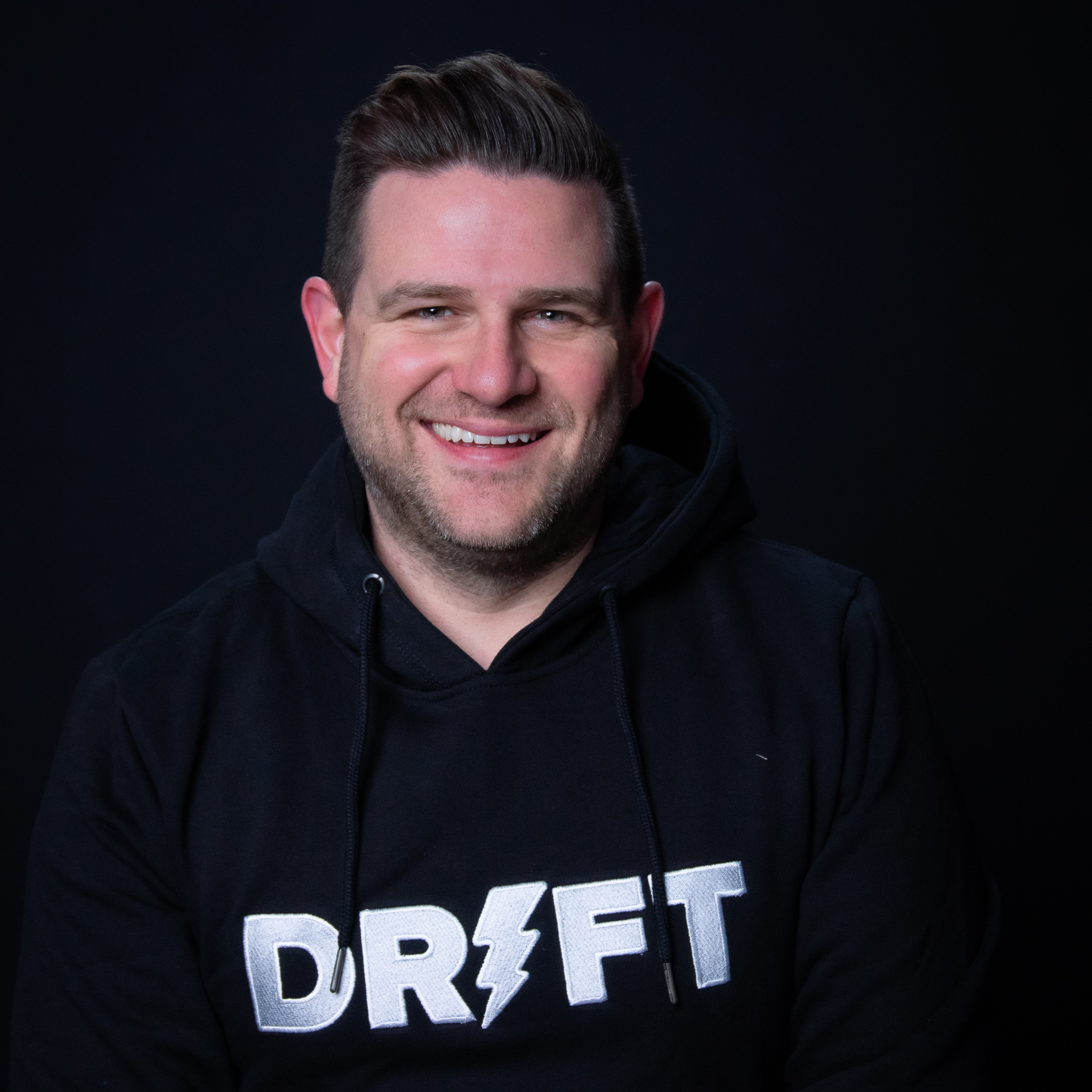
Justin Keller
Today's Guests

